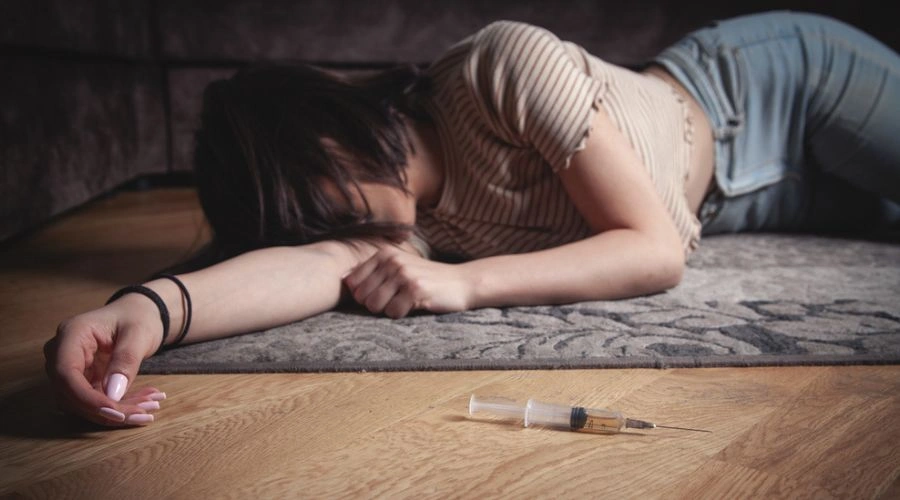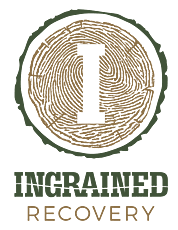How to Recognize the Different Forms of Heroin
Have you ever found yourself wondering, “What does powder heroin look like?” or “What does black tar heroin look like?” Look no further for the information that you need to keep yourself (or your loved one) safe from this dangerous drug.
Heroin, a drug of many names, also comes in many forms. This makes it hard to identify heroin, especially if you’ve never seen it before. Fortunately, with this guide, you’ll be able to identify different types of heroin.
Whether you need to know yourself or are worried about a loved one, being aware of what heroin looks like can save lives. Keep reading to learn how to identify heroin and when to contact Ingrained Recovery for more help.
Get Effective Detox and Rehab Options
Find Help At Ingrained Recovery
Identifying Different Types of Heroin

Heroin and its many forms can be found from the eastern to the western United States. When powdered, it can be white, light brown, or dark brown. Another type of heroin is recognizable as a sticky, black substance.
This semi-synthetic opioid is lab-produced using the natural substance that comes from the seeds of the opium poppy plant. It’s manufactured using morphine.
What Does Powder Heroin Look Like?
The appearance of powdered heroin depends on where it is manufactured and sold. It can be white, tan, or brown in color, though brown powdered heroin isn’t traditional powder. Brown powder heroin is commonly made by crushing black tar heroin, resulting in a coarser powder.
It’s rumored that white powder heroin has fewer impurities than its counterpart. However, many household products mixed with heroin are white including sugar, talcum powder, or starch. Caffeine pills or fentanyl powder can also be white.
What Does Black Tar Heroin Look Like?
While powdered heroin is commonly snorted and black tar heroin is commonly smoked. People who struggle with heroin addiction commonly smoke it or snort it first, before injecting heroin as their tolerance grows.
Black tar heroin is dark brown or black. It is sticky and looks like roofing tar. Black tar heroin also might be hard to the touch.
It’s easy to confuse rock heroin with black tar heroin. The main difference is the stickiness of the substance. They look the same, but when touched, black tar heroin is much stickier than rock heroin.
What Does Liquid Heroin Look Like?

Liquid heroin is most commonly made by mixing the drug known as black tar heroin with water. It has the appearance of murky, brown to dark brown water. After the two ingredients are mixed, liquid heroin is commonly heated (using a spoon, bottle cap, or something similar), and then injected.
What Does Heroin Smell Like?
There is no smell associated with pure heroin. Heroin’s odor changes depending on how it is cut and what ingredients are added to it. After being cut, the smell of heroin might be compared to chemicals, vinegar, or general bitterness. The aroma is worse when heroin is smoked.
What Does Heroin Taste Like?
Many bland substances found in heroin like talcum powder don’t have a distinct taste, so it can be bland. It might also be pungent, acidic, or bitter if cut with chemicals, laundry detergent, or other harsher household products.
Get Accredited Treatment Programs
Find Help At Ingrained Recovery
The Drug Enforcement Administration and Overdose
For decades, the number of overdose deaths increased every year until 2024. From June 2023 to June 2024, there was a 14.5% annual decrease. Still, more than 107,000 families found themselves permanently changed by drug addiction.
The DEA also reports finding a significant amount of fentanyl in approximately 5 out of 10 seized counterfeit pills – a number reduced from the 7 out of 10 pills contaminated in 2023. It does not take much fentanyl to overdose. Imagine the amount of sugar in a sugar packet – that’s enough fentanyl to kill 500 people!
Why What Heroin is Cut With Matters
Drug dealers’ priority is making money. It’s not uncommon for heroin to be “cut” – meaning that additives are used to sell less actual heroin while making more money. After exchanging hands several times, most heroin is cut with a variety of substances.
Tested heroin samples contain numerous household ingredients including talcum powder, starch, baking soda, powdered milk, and sugar. Laundry detergent, rat poison, caffeine powder, crushed over-the-counter painkillers, and other drugs, including fentanyl, have also been detected.
Increased Tolerance Leads to Increased Risk
With all the risks, people use heroin for one reason – it’s highly addictive. The drug has powerful effects on the brain’s reward system and mimics the effects of prescription opioids. It is considered one of the most addictive forms of substance use.
With continued use, you won’t feel normal when you aren’t high. Tolerance is also common, meaning you’ll need to increase heroin use to achieve the same effects. It’s not uncommon for people to eventually start injecting the drug, even if they started snorting or smoking it, because of the intense onset.
While these doses feel the same, with more heroin comes a greater risk of taking a fatal dose of fentanyl. Even testing for fentanyl isn’t accurate every time because of the minuscule amount necessary for an overdose.
Recognizing Heroin Use in a Loved One

Heroin users take a risk every time they ingest the drug, no matter if it’s the first time or the hundredth. Street heroin is far from being pure – it’s impossible to know what it is cut with and the potency of the dose.
If you find a substance that looks like heroin, drug paraphernalia may also be nearby. Razor blades, straws, and rolled paper may be from snorting it. Aluminum foil or pipes may be used for smoking heroin. Bottle caps, spoons, needles, and syringes may be signs of injecting it.
You’re likely to notice behavioral changes as your loved one begins struggling with heroin addiction. They may lie, socially withdraw, or become secretive. Mood swings are sometimes common and it seems as if this highly addictive substance takes over their life.
Sometimes, troubles at work, financial problems, or legal issues arise from use. They may ask you to borrow money, start selling their things, or even steal to fund heroin use.
Your loved one might have noticeable physical changes, too. They may lose significant weight, nod off mid-conversation, or neglect to care for themselves. Scratching and itching might cause visible skin damage. Bruising and punctures from needles, called track marks, might also be noticeable.
Heroin Abuse and Health Problems
During early heroin use, excessive drowsiness, constipation, dry mouth, insomnia, and itching are common symptoms. Over time, its effects on the brain and your opioid receptors make it hard to feel pleasure.
Secondary mental health conditions are common, and heroin’s respiratory effects cause lung health complications, according to the National Institute on Drug Abuse. Women may stop having a regular period and men may struggle with sexual dysfunction.
Using nasally damages the nasal passages and sinuses, leading to chronic bleeding and irreversible damage. Smoking heroin causes a chronic cough and additional lung problems.
There are also risks associated with intravenous drug abuse for people who inject heroin. Scarred or collapsed veins, abscesses, liver disease, kidney disease, pneumonia, tuberculosis, and an often-deadly heart complication called myocarditis are all common. There’s also a risk of bloodborne disease and illness, including Hepatitis B, Hepatitis C, and HIV.
Convincing Your Loved One to Seek Heroin Addiction Treatment

Many people find themselves wondering what to do when a loved one is struggling with heroin abuse. Do you stay silent and just hope for the best? Or do you confront them and have the risk of them creating more distance?
Getting help is always the right option – but it’s important to go about it the right way. You want your loved one to feel supported, not attacked. Call Ingrained Recovery with questions about our evidence-based treatment programs for heroin use disorder or guidance in convincing your loved one to seek help.
Even if they aren’t quite ready, call for more information. It can be helpful to come up with a plan for when they are ready to seek addiction treatment. Knowing what to do next makes those early, unsteady steps toward recovery so much easier!
Inpatient Rehab for Heroin Addiction
Whenever possible, residential treatment is recommended for people struggling with heroin drug abuse. Opioids like heroin have a depressant effect on your central nervous system. The withdrawal symptoms are uncomfortable, intense, and sometimes dangerous.
Opioids also have strong mental effects on the brain. This makes it hard to resist heroin cravings even after the physical symptoms have worn off.
Inpatient rehab is also the ideal setting for medication-assisted treatment. Ingrained Recovery offers both of these services. While learning tools for lasting recovery, our clients have their symptoms managed in a supportive environment. This holistic approach offers the best chance of recovery from substance use.
Up To 100% of Rehab Covered By Insurance
Find Help At Ingrained Recovery
Reach Out to Ingrained Recovery for More Information
Whether a white or brown powder or a black, sticky substance, knowing how to identify heroin is important for keeping yourself (or your loved one) safe. The next best step is reaching out to Ingrained Recovery for support.
Whether you want to check availability, talk about treatment options, or need guidance with a loved one, we are waiting to help. Call our Eastman, Georgia treatment center today!
References
- https://www.dea.gov/press-releases/2024/12/16/overdose-deaths-decline-fentanyl-threat-looms
- https://nida.nih.gov/publications/research-reports/heroin/what-are-medical-complications-chronic-heroin-use
- https://www.samhsa.gov/libraries/evidence-based-practices-resource-center

